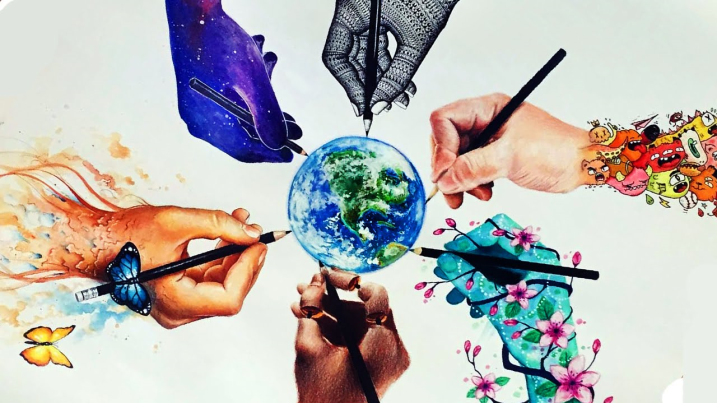
In an age where fashion is not just about what you wear but how you wear it, the ability to personalize clothing through advanced printing techniques and AI Fashion Trend Forecasting Tool has revolutionized the industry. This transformation isn’t just about the infusion of technology into fashion design; it’s about offering consumers a voice through their wardrobe choices. As we delve into the sophisticated world of fabric printing, we uncover a landscape where creativity meets innovation, giving rise to garments that are as unique as the individuals who wear them.
The Basics of Advanced Clothing Printing
At the heart of modern printing innovation are several key techniques that have reshaped the industry. Screen printing, a long-standing favorite in the fashion world, continues to be celebrated for its ability to produce vibrant, durable designs, especially in large batches where cost-effectiveness is critical. Direct-to-garment (DTG) printing offers an alternative for intricate and highly detailed designs, excelling in small runs or single-piece orders without the need for extensive setup. Dye Sublimation takes precision further, seamlessly integrating prints into fabrics for high-resolution, long-lasting images that resist peeling and fading.
Emerging alongside these methods is the revolutionary approach of direct-to-film (DTF) printing, which allows vibrant designs to be printed on film and then transferred to various surfaces with remarkable ease and versatility. Unlike traditional methods, DTF printing accommodates a broader range of materials and delivers sharp, resilient prints ideal for detailed, multi-color designs.
At the forefront of this innovation is the Prestige Pro DTF Printer, a cutting-edge machine designed to meet the demands of businesses seeking high-quality, efficient printing solutions. The choice of printing method—whether screen printing, DTG, dye sublimation, or DTF—ultimately depends on factors such as fabric type, design complexity, and order quantity, but DTF’s adaptability is carving out a new niche in the industry.
Personalization and Its Impact on Consumer Behavior
Personalization in fashion isn’t just a trend; it’s a response to the growing consumer desire for individuality and self-expression. Customized apparel has seen a surge in popularity, driven by the digital native generation that values uniqueness over mass-produced uniformity. This shift is evident in the proliferation of online platforms where customers can design their garments, influencing everything from the choice of fabric to the print.
The impact on consumer behavior is profound. Customization encourages a deeper connection between the brand and the customer, often leading to higher satisfaction and loyalty. Moreover, as consumers become designers, they are more likely to value and keep their personalized items longer, contributing to a more sustainable consumption pattern.
The Role of Design Software in Fashion Printing
Innovative design software has become a cornerstone in modern clothing printing. These powerful tools allow designers to visualize and manipulate their creations with incredible precision before the printing process begins. Programs capable of detailed graphic design, 3D modeling, and color matching are essential for creating prints that are both beautiful and technically feasible.
These software solutions not only streamline the design process but also democratize fashion design, making it accessible to amateurs and professionals alike. The role of such technology is pivotal in ensuring that the final product reflects the designer’s original vision, bridging the gap between imagination and reality.
Sustainable Practices in Clothing Printing
As the fashion industry faces increasing scrutiny over its environmental impact, sustainable printing practices have become more crucial. Eco-friendly printing technologies focus on reducing waste and using non-toxic inks, which are better for both the environment and the workers involved in the manufacturing process. Brands committed to these practices are not only meeting the ethical standards demanded by today’s consumers but are also setting new trends in the sustainable fashion movement.
The Future of Fashion Printing
Looking ahead, the future of clothing printing appears vibrant and full of potential. Technological advancements such as 3D fabric printing and AI-driven design algorithms promise to further personalize and enhance the fashion experience. These innovations could one day allow us to design garments from the comfort of our homes, tailored perfectly to our body measurements and style preferences.
Moreover, as virtual and augmented reality technologies continue to evolve, we might soon be able to see how a print will look on a garment in a virtual environment before it is ever physically produced. This level of experimentation and visualization could revolutionize fashion design and production processes.
Conclusion
Advanced printing techniques are much more than a technological achievement; they are a form of artistic expression that offers endless possibilities for customization and personalization in fashion. By embracing these technologies, designers and consumers can create clothing that truly represents their personal style and values. As we continue to innovate, the bond between technology and fashion will strengthen, leading to more sustainable, creative, and personal fashion choices that empower individuals and make a statement in the world.




